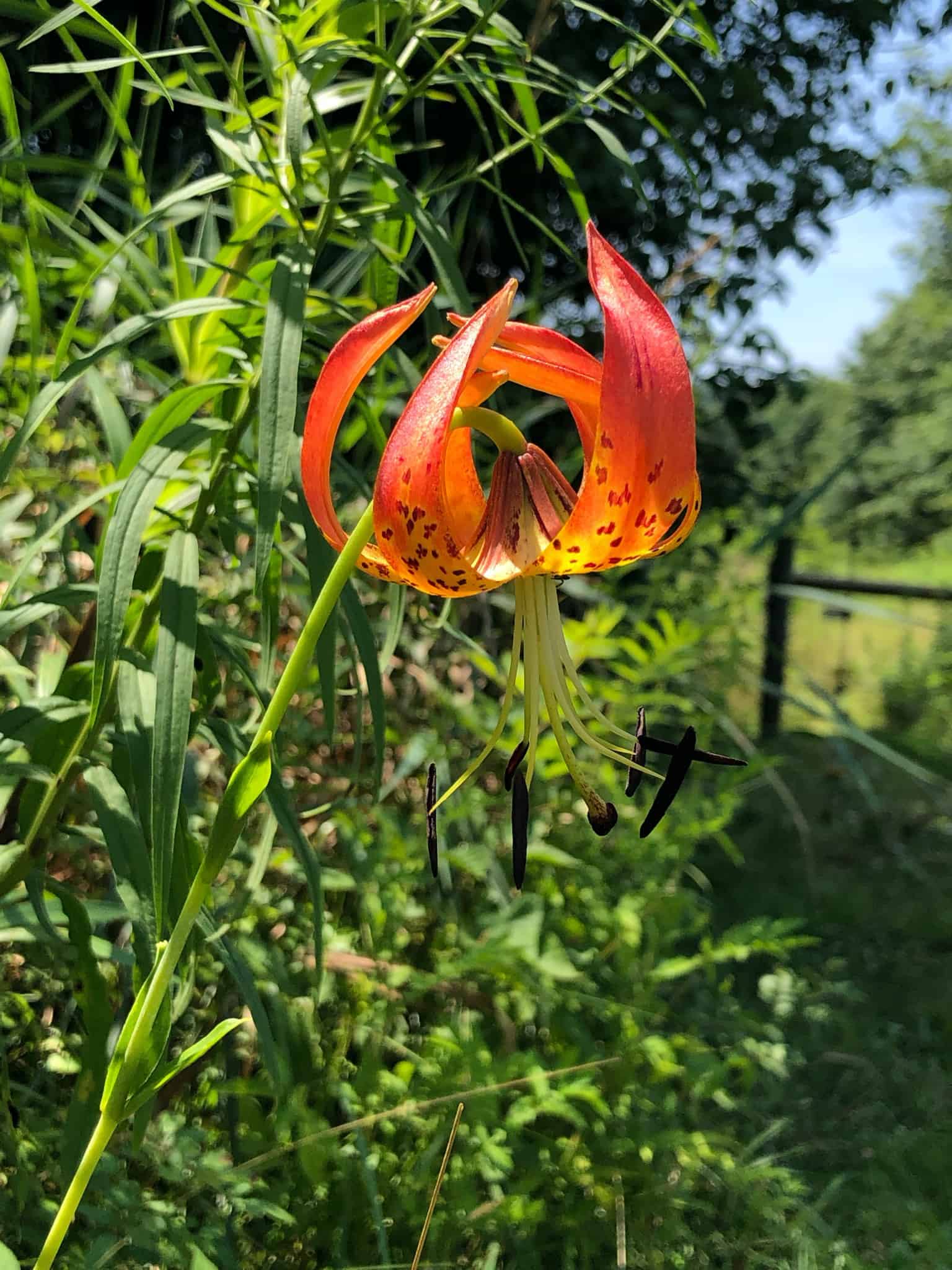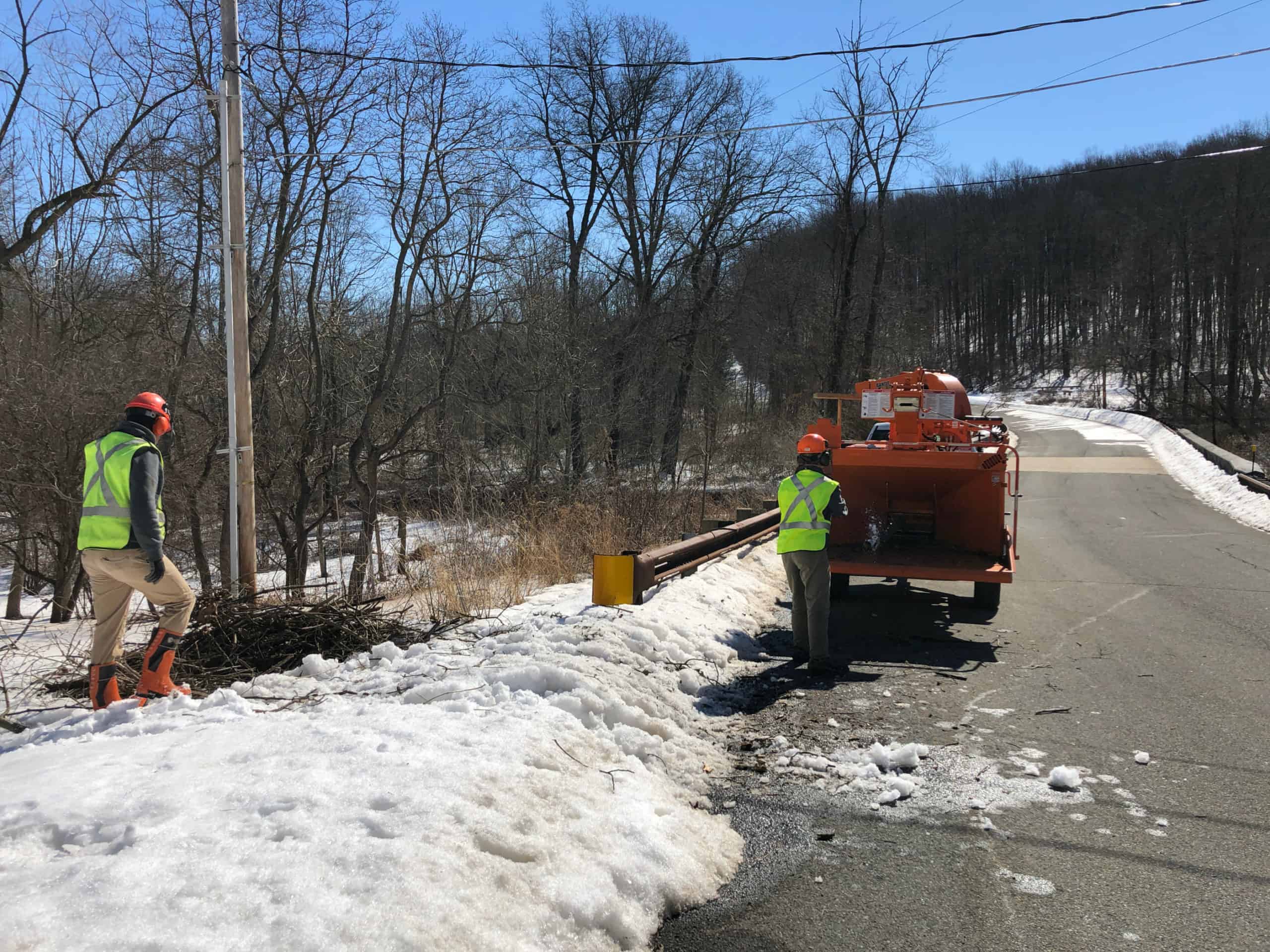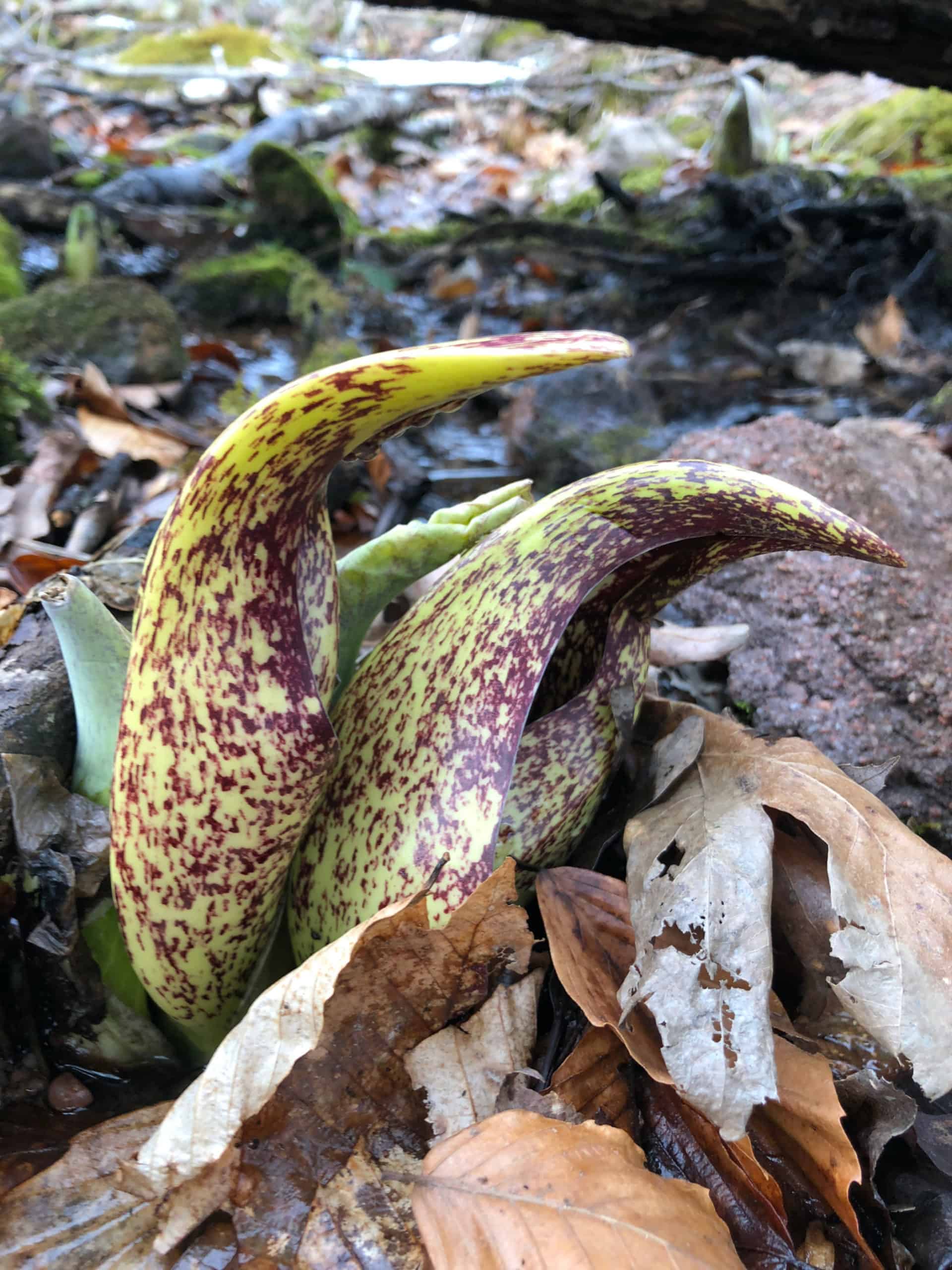Crow’s Nest: Spring is coming…
By Daniel Barringer, Preserve Manager.
Ok, it may not feel like it yet, but it might later this week! Here are a few summer photos to remind you that soon it will be hot and humid here!

The walkway from the parking area to the visitor center barn is shaded from the summer sun.

Canada lily (Lilium canadense) blooming last summer at Crow’s Nest.

Joe Pye and purple coneflower in a sunny planting bed.

Above, black eyed Susans, mountain mint, and small clumps of Virginia sweetspire (Itea virginica) by the path at the barn ramp. These plants are all still present, just resting.
And now, for what we’ve been up to lately: We’ve been chipping piles of brush accumulated since last summer.

Below, we’ve been cutting down dead ash trees that will fall in farm fields. We’re dropping them on a tarp to make it easier to clean up the debris; there are crops such as winter wheat under the snow and branches and twigs would interfere with the harvest. I assure you, Alison and Cody are smiling under their masks.

The last four days of below-freezing mornings has offered a unique opportunity. We were under snow so long this winter that I had almost given up on our annual winter mowing of meadows with the tractor. But with the snow partly melted and yet with the ground still cold I was able to mow nearly all of the meadows scheduled this winter. Normally the mowing takes place spaced out over four weeks of early mornings (the rising sun turns the surface muddy); this year, it was done in just four intense days starting before first light.
It’s actually helpful for the snow to melt slowly, and preferably not in rain. Heavy melting causes stream flooding which damages the Creek Trail. We’ll still have a “mud season” but it could be much worse.
And look! The earliest of winter wildflowers has been up for a while. Capable of melting the snow around itself, skunk cabbage (Symplocarpus foetidus) appeared as the snow layer grew thinner.

